

Home Preamble Index Areas Map References Me Drakkar

Blencathra from Great Mell Fell
I must have thought, when setting up these webpages, that this iconic image of Lakeland would be a pleasing way to wrap the page up. Unfortunately, I was mistaken. An eminent aesthetician singled out Blencathra from all the Lakeland hills as being displeasing, disagreeable and disgusting. I’m very sorry about that. I hope that the photograph hasn’t put you off your dinner.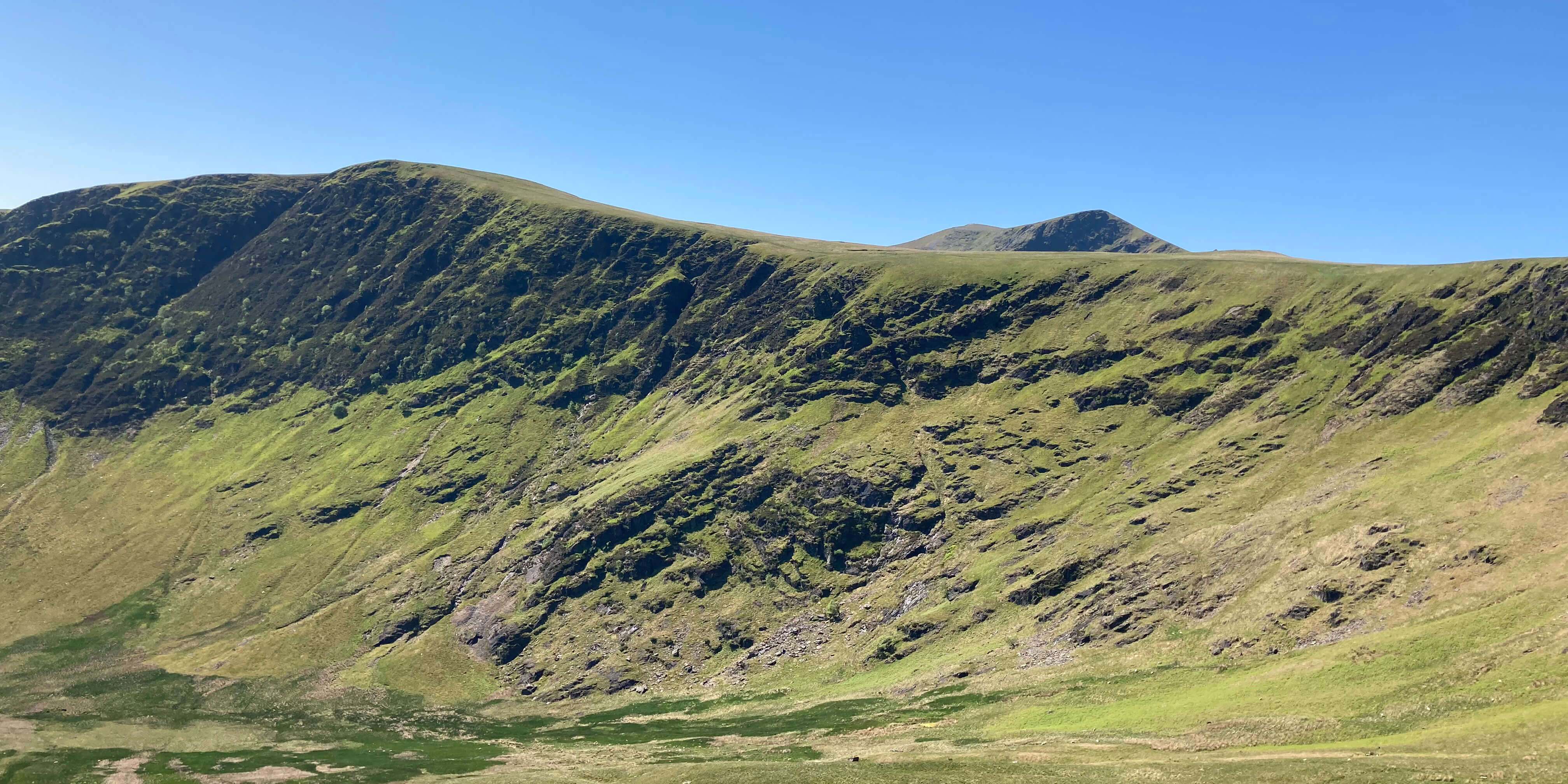
Bannerdale Crags with, peeping above, Atkinson Pike and, to its left, Blencathra
The path south, on the rim of Bannerdale Crags, is in fact just below the top and therefore provides no view of Skiddaw and the hinterland Back o’Skiddaw but we soon left it, heading for the prominent top of Atkinson Pike. To the left of the Pike we had a view of the profile of Sharp Edge, with a few tiny figures inching their way along it. Sharp Edge is the narrowest, and scariest, ridge in the Lake District although you cannot really appreciate this with a side view.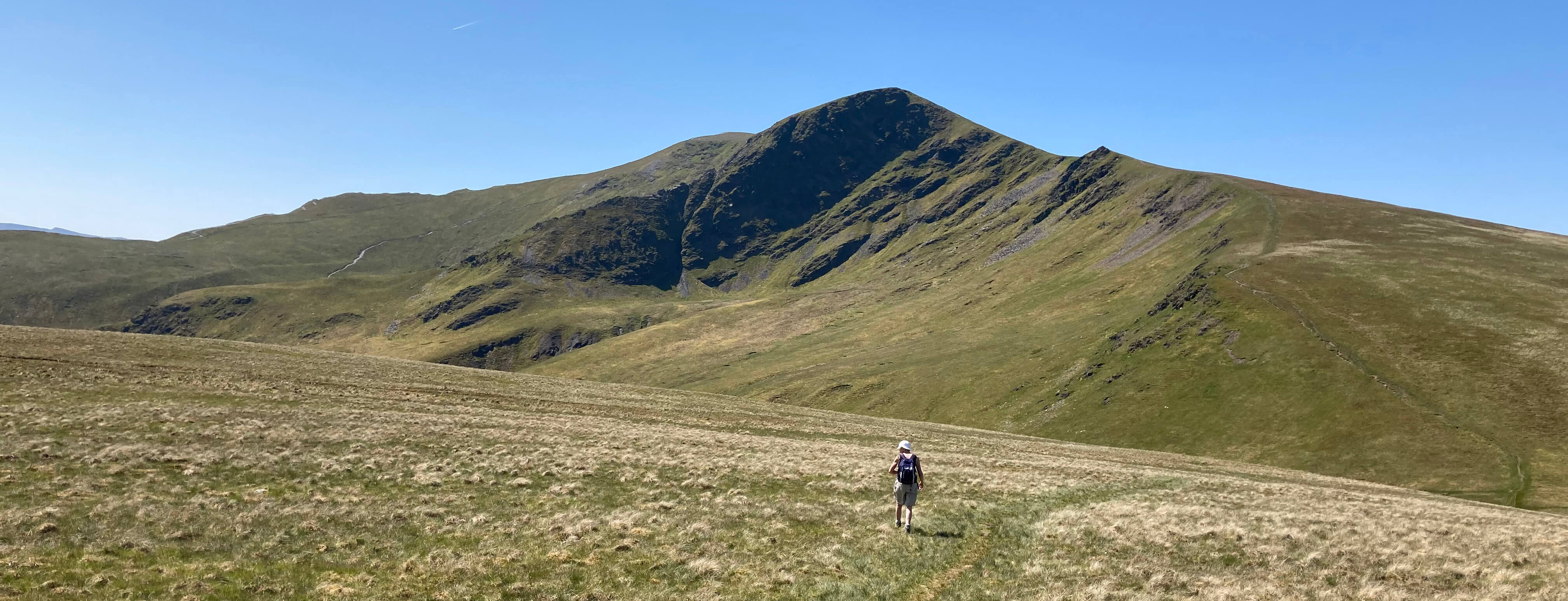
Approaching Atkinson Pike

Sharp Edge
From Atkinson Pike (845 metres) it was but a stroll to the top of Blencathra (868 metres), where, as you’d expect on such a day, there were a fair number of people milling and lolling about, all lightly clothed in the June sunshine but with a fresh breeze. The views were, of course, good but not as clear as might be hoped, because of the haze accumulated from recent still, sunny days. For our lunch break we retreated from the breeze into the saddle that lies between Atkinson Pike and Blencathra, which used to be more often called Saddleback.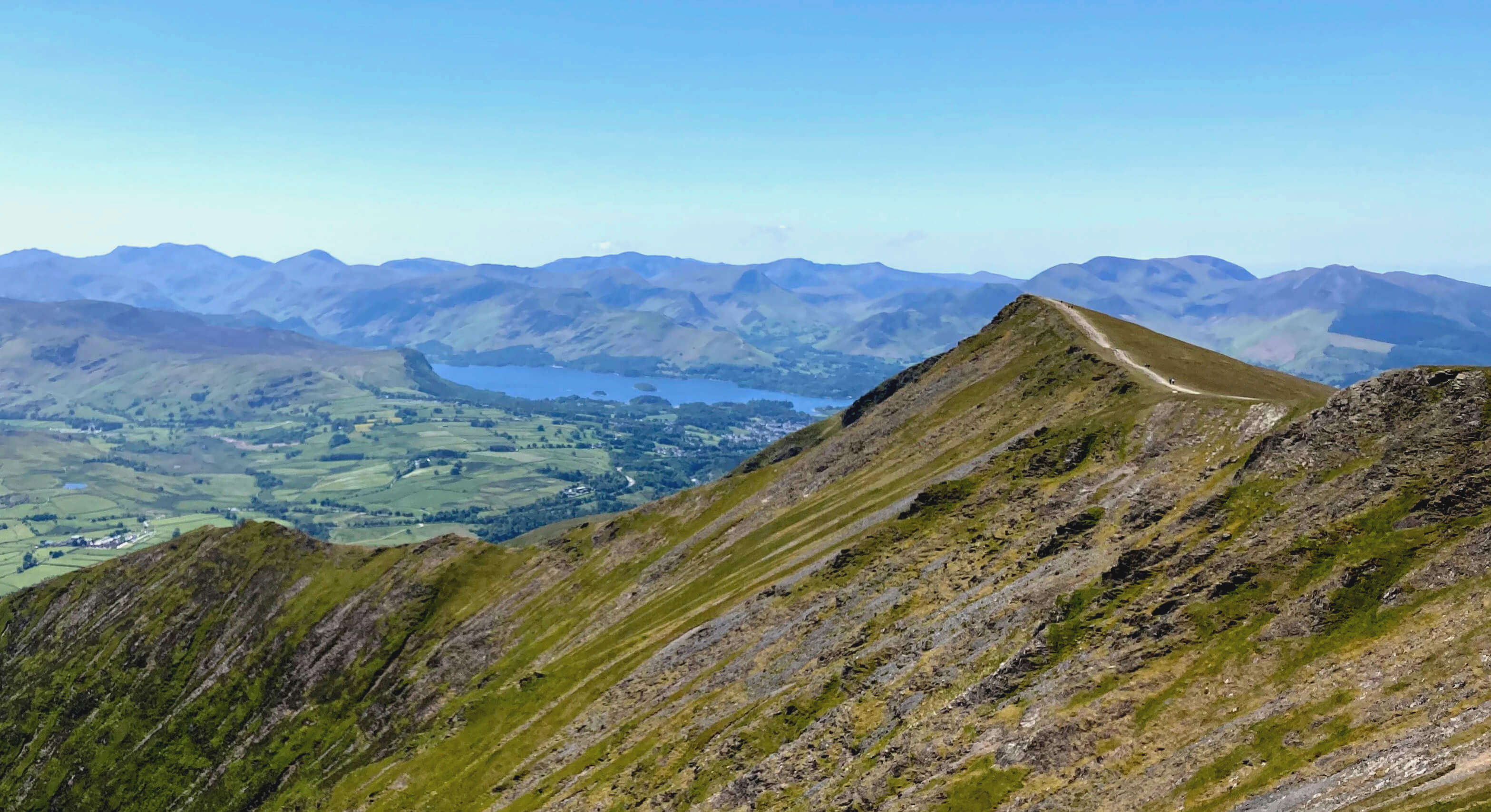 Right: From Blencathra towards Derwent Water, a little hazy today.
Right: From Blencathra towards Derwent Water, a little hazy today.
“The beauty of a distant mountain in a great measure, depends on the line it traces along the sky; which is generally of a lighter hue. The pyramidal shape, and easy flow of an irregular line, will be found in the mountain, as in other delineations, the truest source of beauty.Gilpin is here asserting that our appreciation of the beauty of a mountain is a function only of its appearance and, in particular, of its skyline. Yes, I can accept that for a mountain like, say, Mount Fuji, which I have only ever seen photographs of, I can only judge its beauty by its appearance. If I followed Gilpin’s guidelines then I would not consider Mount Fuji beautiful – it is too symmetrical, without the irregular breaks that Gilpin requires.
Mountains therefore rising in regular, mathematical lines, or in whimsical, grotesque shapes, are displeasing. Thus Burnswark, a mountain on the southern border of Scotland; Thorp-Cloud, near Dovedale in Derbyshire, especially when seen from the garden at Ilam; and a mountain in Cumberland, which from its peculiar appearance in some situations, takes the name of Saddleback, all form disagreeable lines. And thus many of the pointed summits of the Alps are objects rather of singularity, than of beauty. Such forms also as suggest the idea of lumpish heaviness are disgusting – round, swelling forms, without any break to disincumber them of their weight.
Indeed a continuity of line without a break, whether it be concave, straight, or convex, will always displease, because it wants variety; unless indeed it be well contrasted with other forms. The effect also of a broken line is bad, if the breaks are regular. The sources of deformity in the mountain-line will easily suggest those of beauty. If the line swell easily to an apex, and yet by irregular breaks, which may be varied in a thousand modes, it must be pleasing. And yet abruptness itself is sometimes a source of beauty, either when it is in contrast with other parts of the line; or when rocks, or other objects, account naturally for it.”
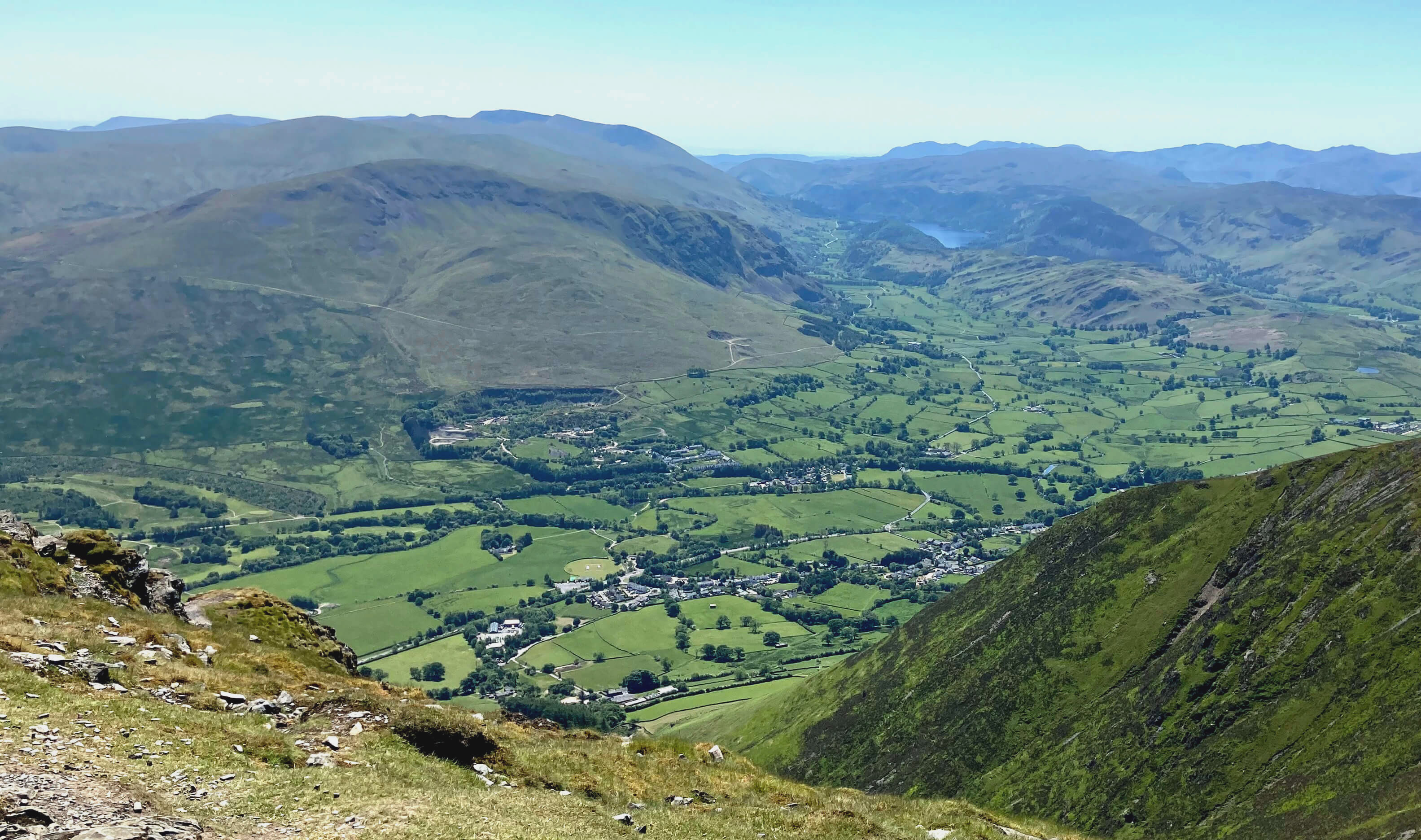 Right: From Blencathra, looking south, Thirlmere just visible.
Right: From Blencathra, looking south, Thirlmere just visible.

Scales Tarn, with Sharp Edge to the left
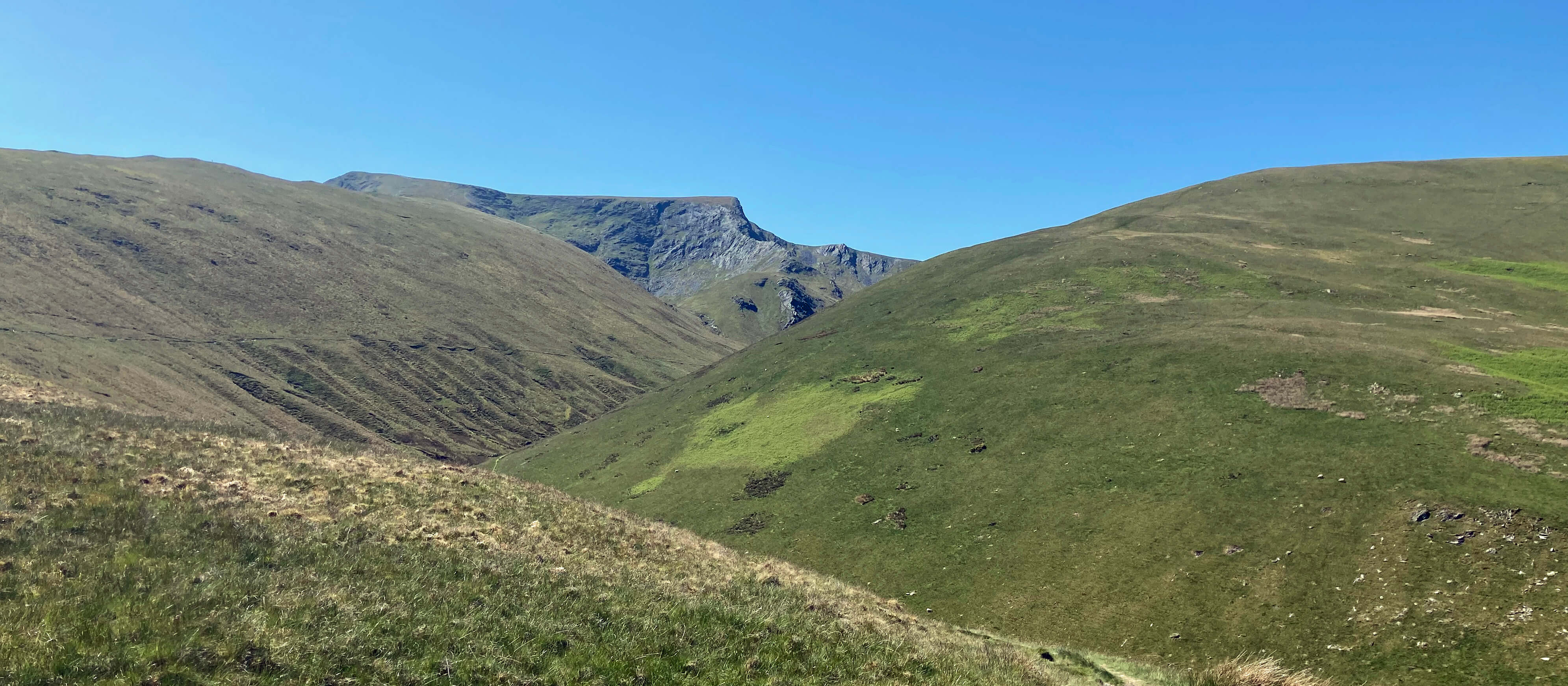
Saddleback from Mousthwaite Comb
Enjoying an ice-cream at the Mill Inn, Mungrisdale, we reflected on our expedition. Since I started Saunterings in 2018 I have walked up only one mountain higher than Blencathra, and that was Cross Fell in July 2019 (Sauntering 56). This is the highest we (Ruth and I) have walked since 2009. Perhaps we can manage some other high mountains?
Home Preamble Index Areas Map References Me Drakkar
© John Self, Drakkar Press, 2018-

Top photo: The western Howgills from Dillicar; Bottom photo: Blencathra from Great Mell Fell